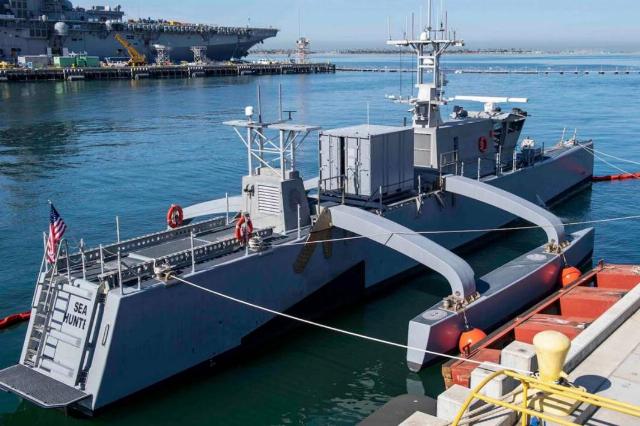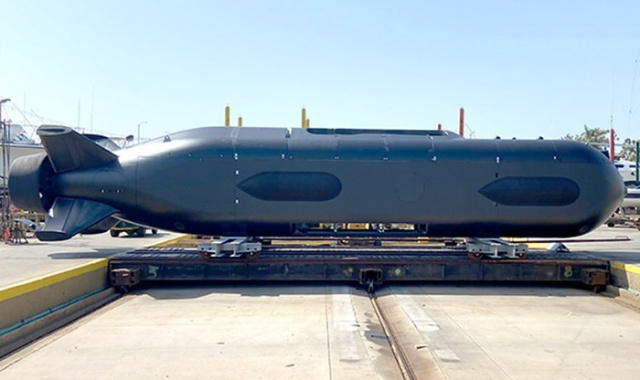What developments are the United States conducting in the field of unmanned drones
The American navy has encountered unexpected difficulties on its way to mastering unmanned technologies. Recent tests off the coast of California have shown that marine drones stall, lose control and collide with each other. Nevertheless, the prospects of the direction are not in doubt, it is swarm technologies that are considered by the United States as one of the trump cards in the fight against the growing strength of the Chinese fleet in a possible collision, and any delay in this area threatens to lose world leadership. For more information about the current state of marine unmanned systems— see the Izvestia article.
A new generation of arms race
The path of the American fleet to drones turned out to be much more thorny than it seemed. A recent Reuters report on the first tests of a group of marine drones off the coast of California showed that mastering new technology is accompanied by serious difficulties. In particular, one drone stalled, the other lost control and crashed into it, flying over the deck. And in other tests, the drone overturned the tugboat, as a result of which the commander of the vessel was overboard. Nevertheless, the United States cannot abandon this race. Global practice shows that any delay in the development of new technologies can lead to a loss of leadership and, as a result, to a strategic defeat.
Washington is aware of the importance of marine drone engineering, because in the 21st century, it is unmanned systems that will determine the shape of the naval forces. Currently, the United States is actively investing in the development and implementation of the so-called Unmanned Maritime Systems (UMS). There are high hopes for these systems. They are designed not only to increase the combat power of the fleet, but also to reduce risks for personnel, and in the long term, to reduce financial costs.
 |
| The unmanned Sea Hunter scout ship. |
| Source: US Navy |
The work is being carried out in several directions at once. So robotic platforms capable of operating both on the surface and underwater should become the central element of the new strategy of the US Navy — Distributed Maritime Operations (DMO), or dispersed maritime operations. This initiative will allow the fleet to become more flexible and unpredictable for the enemy.
Reducing risks for crews is one of the main advantages of using unmanned vehicles. Drones are capable of operating in dangerous areas, such as minefields or near enemy territories, without endangering human lives. The loss of an underwater drone is incomparable to the loss of a submarine, which means that the personnel remains safe.
Economic efficiency is another strong argument in favor of drones. An Arleigh Burke-type guided missile destroyer costs two billion dollars. At the same time, a swarm of inexpensive marine drones, the total cost of which does not exceed a million dollars, is capable of destroying such or a similar ship. This makes marine unmanned technologies not only effective, but also affordable.
In addition, drones do not replace, but enhance the capabilities of existing fleets. They can be equipped with various sensors and sensors, exchange data, and form a unified network for surveillance, reconnaissance, targeting, and communications. Thus, they turn into a powerful tool that increases the overall combat capability of the fleet. Unmanned vehicles also provide tactical flexibility, which gives superiority over a less maneuverable opponent. A large number of drones are capable of distracting enemy forces, conducting reconnaissance or delivering pinpoint strikes, suppressing them.
Drones can operate even in difficult conditions, for example, with the active use of electronic warfare (EW) by the enemy or in the absence of conventional satellite navigation. Developers are already creating autonomous systems independent of electronic warfare, which makes unmanned technologies even more reliable and versatile.
Drone ships, Hunters and Killer Whales
Marine drone programs in the United States are divided into several categories, depending on size and purpose.
LUSV (Large Unmanned Surface Vessel) and MUSV (Medium Unmanned Surface Vessel) are, in fact, large surface ships capable of operating at the forefront of a conventional fleet. These reusable arsenal platforms with a length of up to 60 meters and more can operate autonomously for months. Their main task is to carry anti—ship missiles, complementing the firepower of existing ships.
Several shipyards, including Austal USA and Huntington Ingalls Industries, are working on the development of prototypes of such drone ships. An example of a smaller device is the Sea Hunter trimaran with a length of 40 meters. This unmanned boat can stay at sea without a crew for months. Initially, the Hunter was created to search for silent diesel-electric submarines armed by Russia and China.
 |
| The Orca submarine. |
| Source: techcult.ru |
So far, the United States does not have full-size drone submarines with nuclear installations, but work is underway in this direction. The largest and most ambitious project in this area is the Extra—Large UUV Orca from Boeing. The 26-meter Orca is a fully autonomous small submarine. It does not carry shock weapons, but it can deliver cargo, lay mines, and conduct reconnaissance and surveillance both on the surface and underwater. In the future, specialized combat vehicles may appear on its basis.
Medium and small underwater drones are already actively used. For example, Mk18 Kingfish devices are used to search for underwater objects, such as mines. They can be used to manipulate found objects, whether it's scientific research or lifting rocket debris from the bottom.
A swarm of marine drones
Back in the 1970s, Soviet developers of Granit anti-ship missiles proved that a coordinated attack could be effective against a large enemy. Their missiles could hit an aircraft carrier, despite its unique and powerful defense system. Modern drones use the same principle: acting in concert and attacking from different directions, they are able to penetrate the defenses of full-fledged ships.
In modern naval combat, it is extremely difficult to resist the attack of three dozen nimble fireboats, and even supported from the air. Many defensive systems may simply not have the necessary combat performance. What if there are hundreds of drones? It's possible. Work in this direction is underway in the USA, China and here too. The issue here is not only the cost of hardware, but also the sophistication and boldness of software solutions.
By the way, the United States does not hide the fact that they consider betting on swarm technologies as one of the trump cards in the fight against the Chinese fleet in a possible clash. They even predict that without the creation of a swarm of naval drones, a battle with the Chinese Navy near its main bases will be almost impossible.
The creation of naval drones is not just a technological upgrade, but a paradigm shift in warfare at sea. They can tip the scales in both defensive and offensive operations. Over the years, the importance of this factor will only grow. It is not for nothing that the United States is creating a real "underwater city" — a special training ground for testing future technologies and tactics for the use of drones, for testing and training Navy personnel. It is necessary to monitor the situation and prevent a lag in marine drone construction.
Of course, work is also underway in Russia in all these areas. There are areas in which our developments do not yet have global analogues, for example, robotic offshore platforms with nuclear power plants (the Poseidon project). Naturally, projects in this area are not advertised, and we do not know everything.
Dmitry Kornev
Julia Leonova

